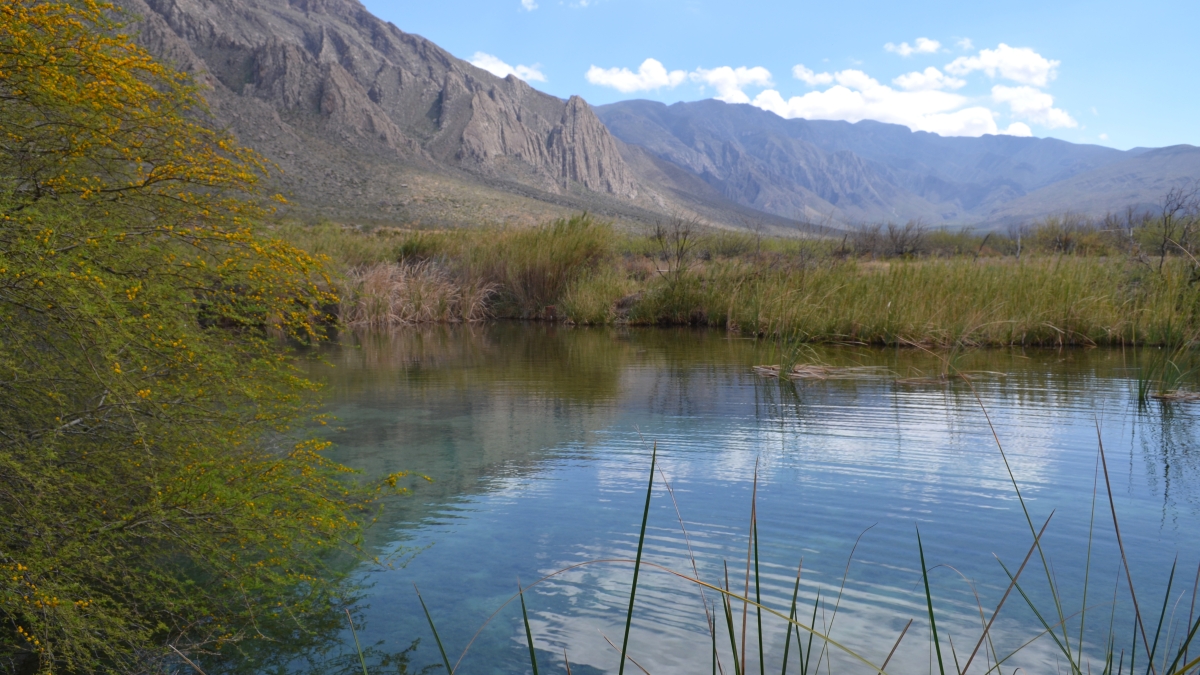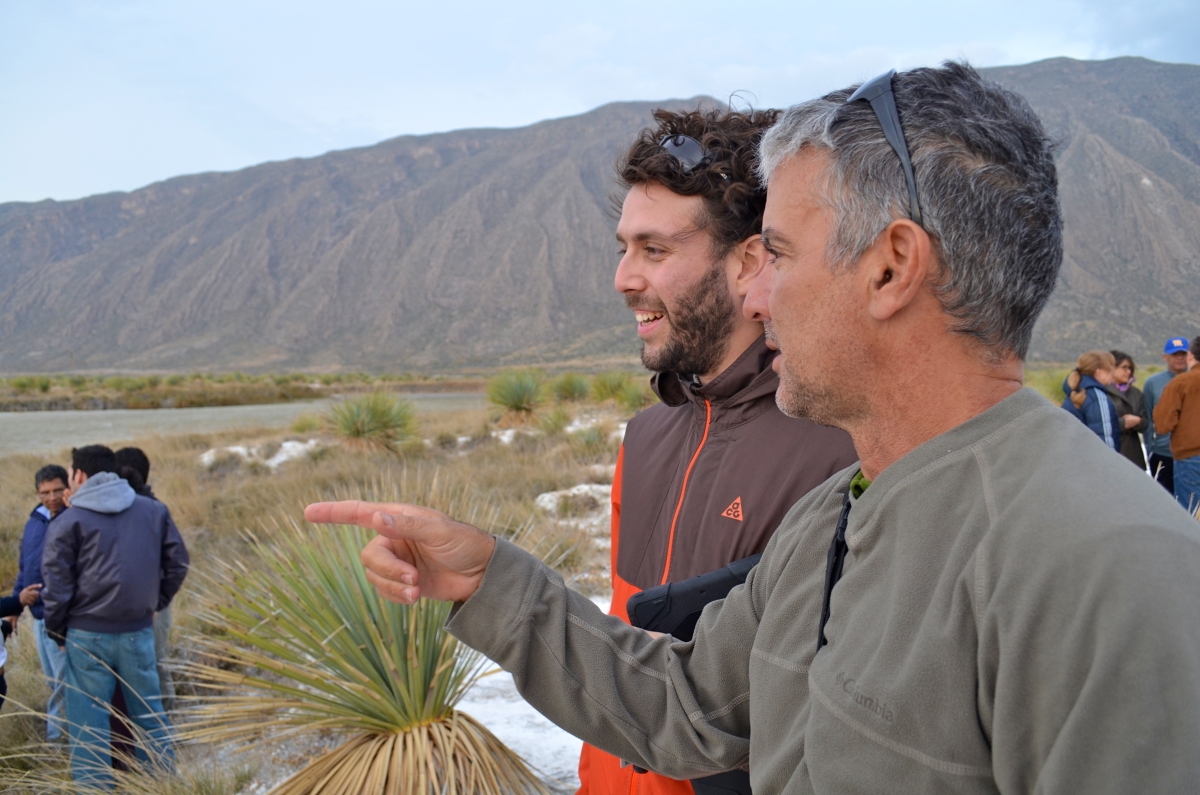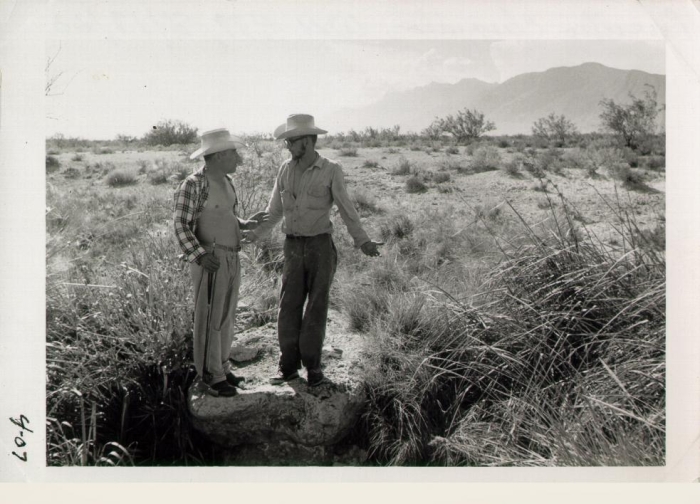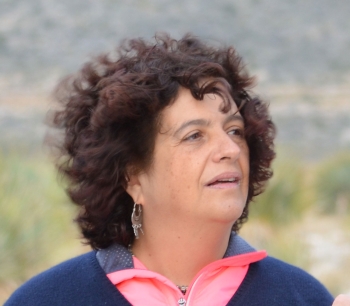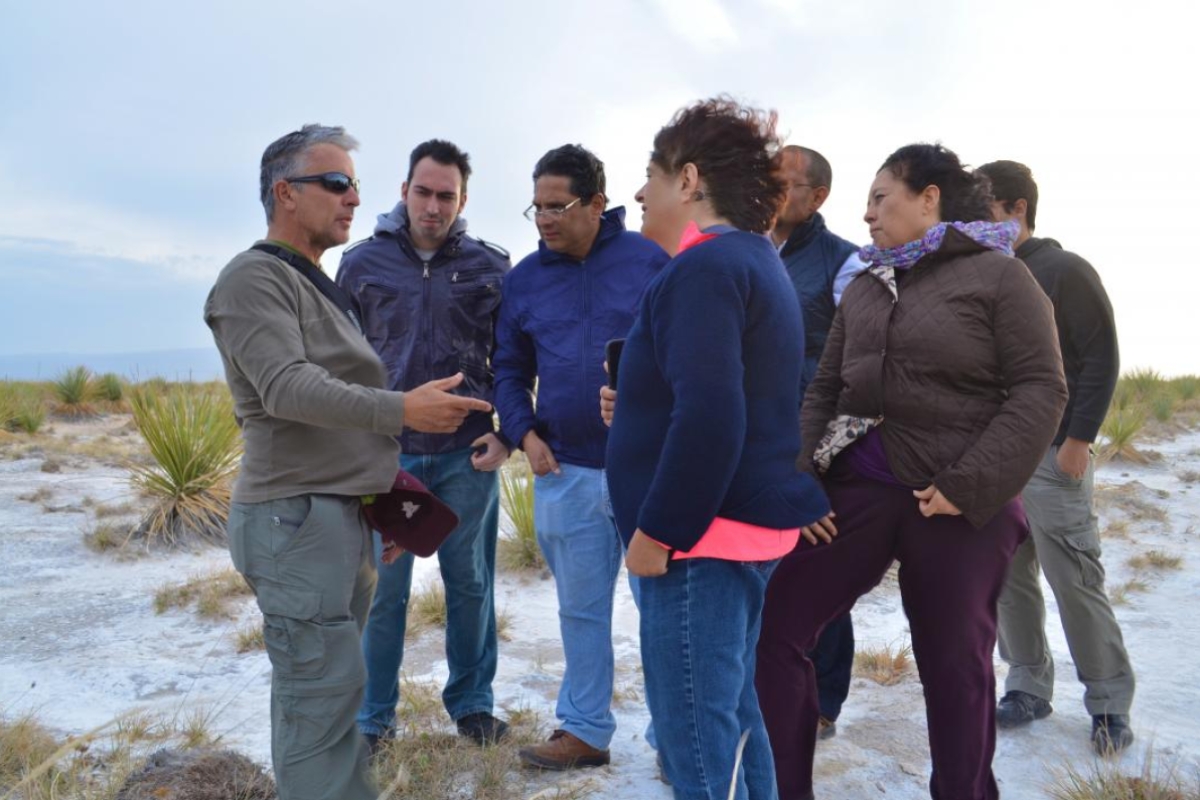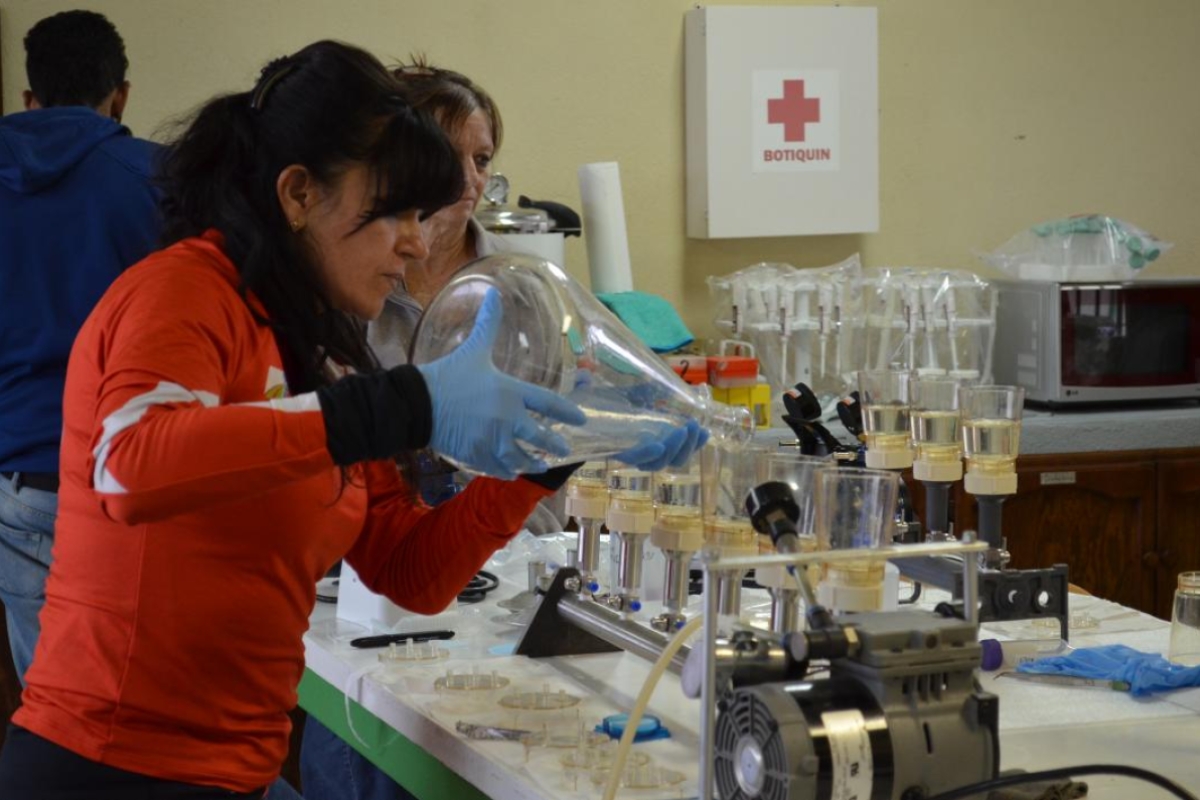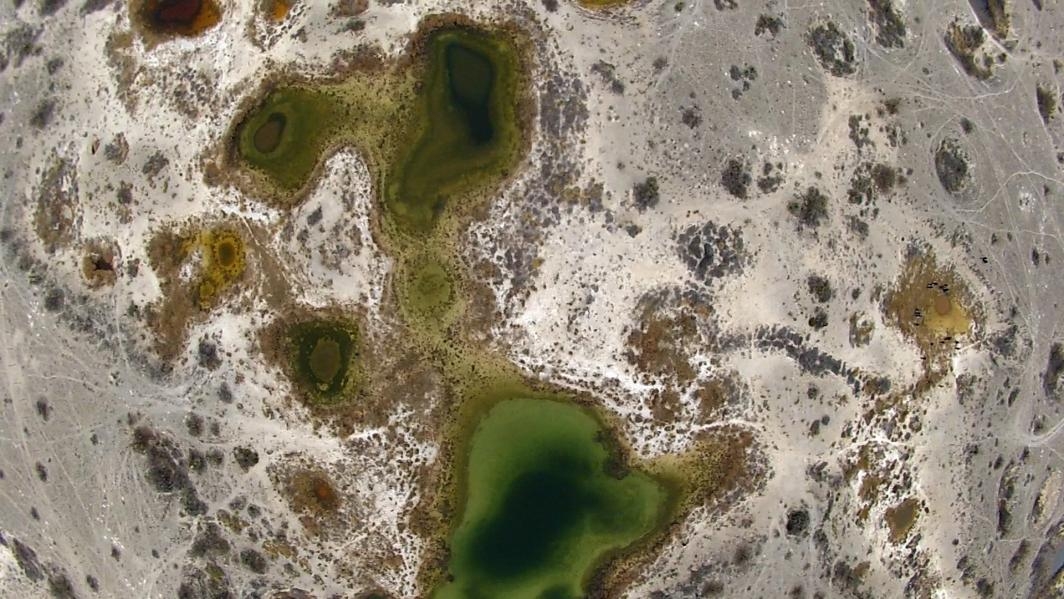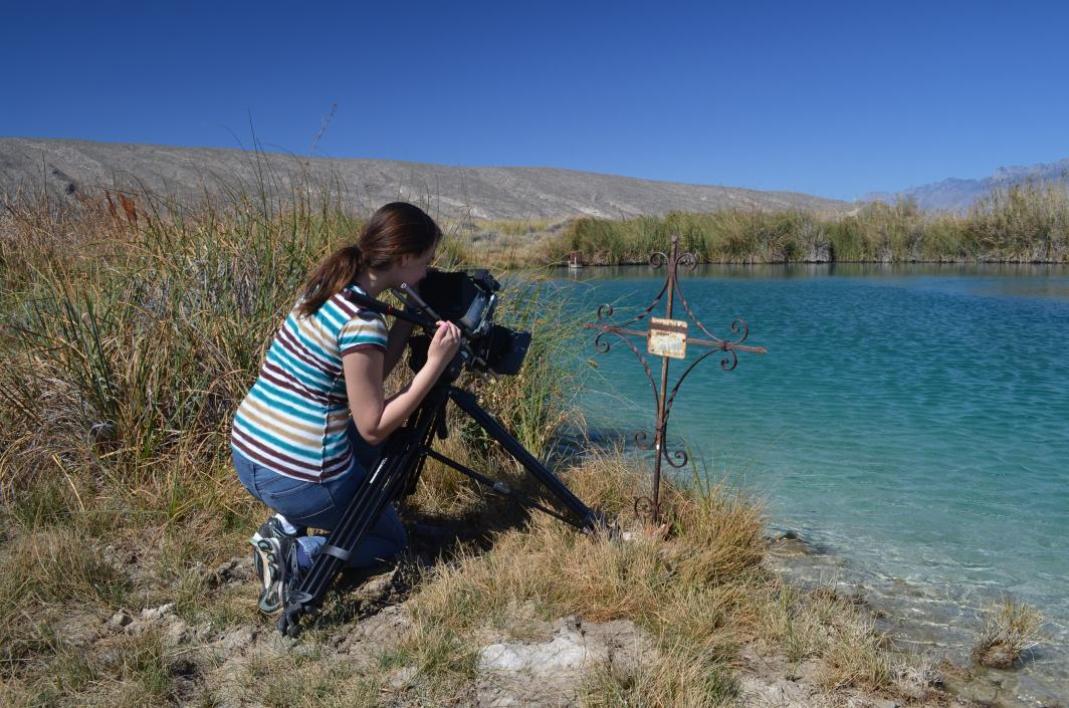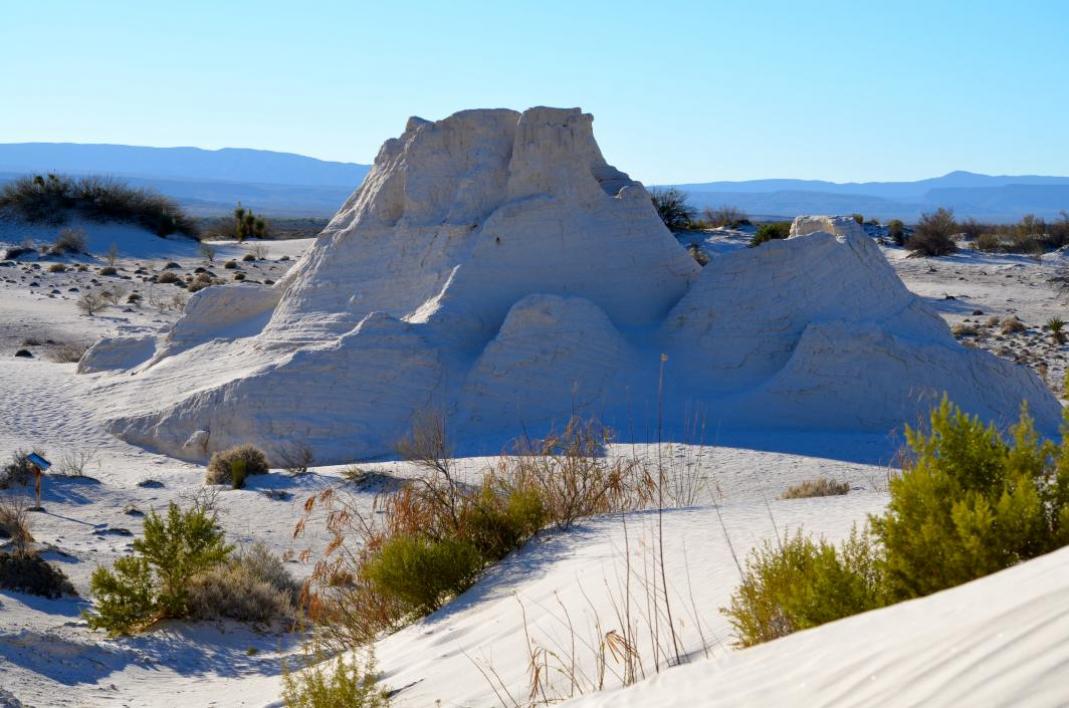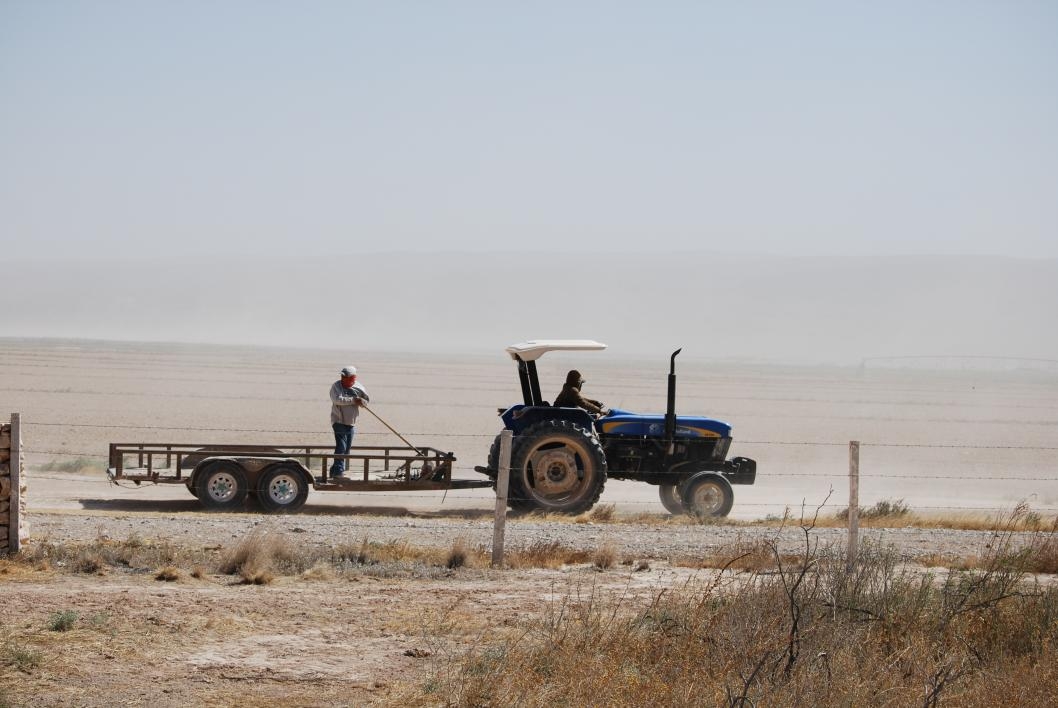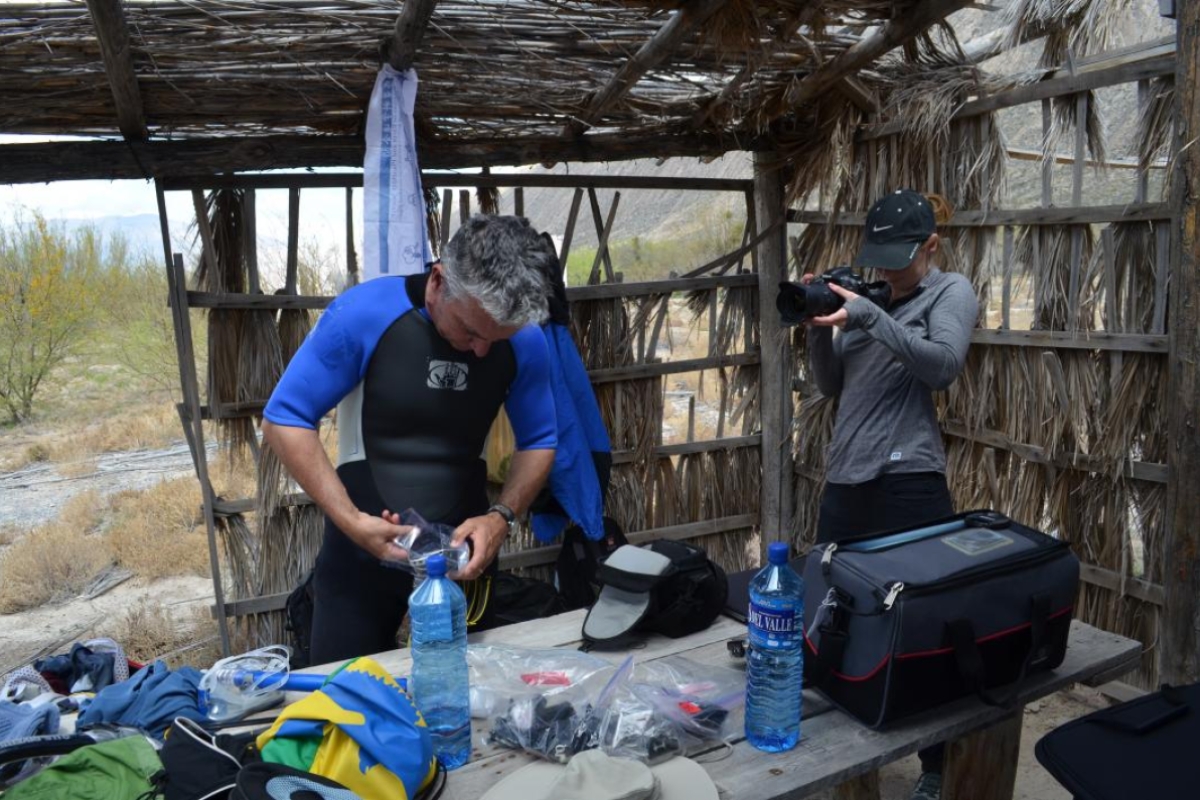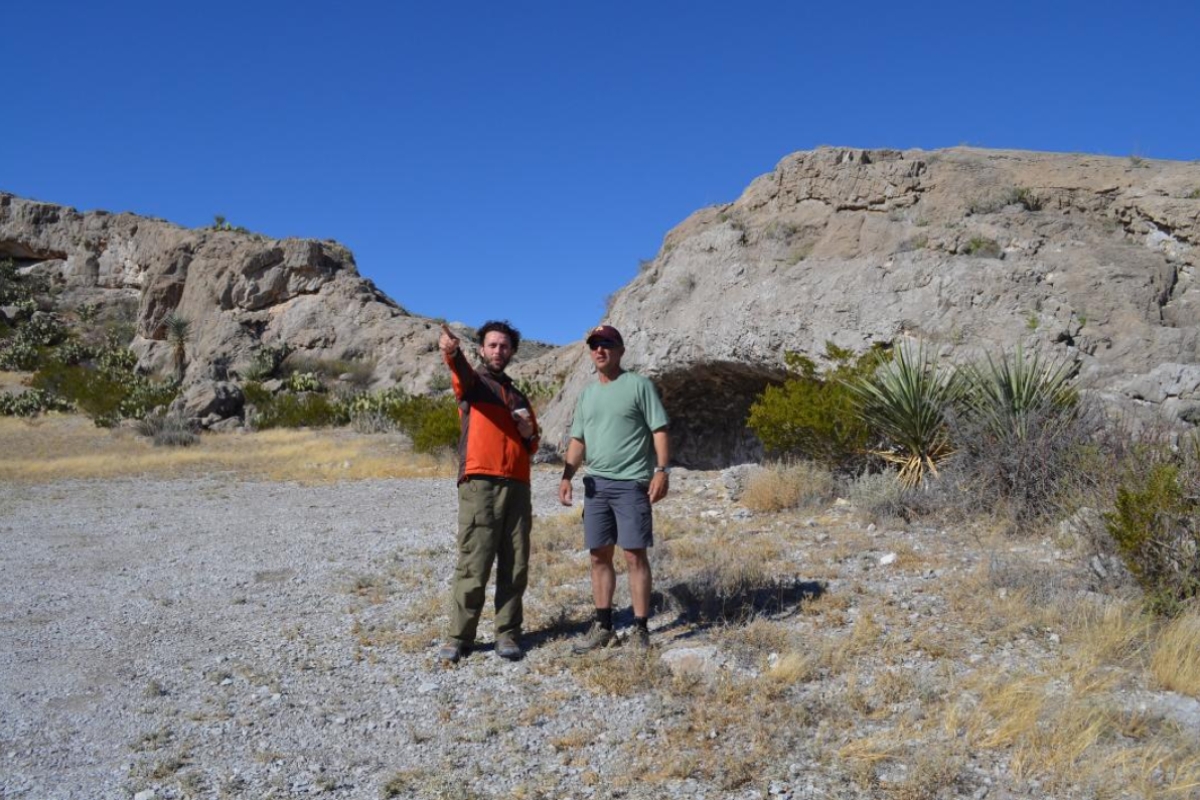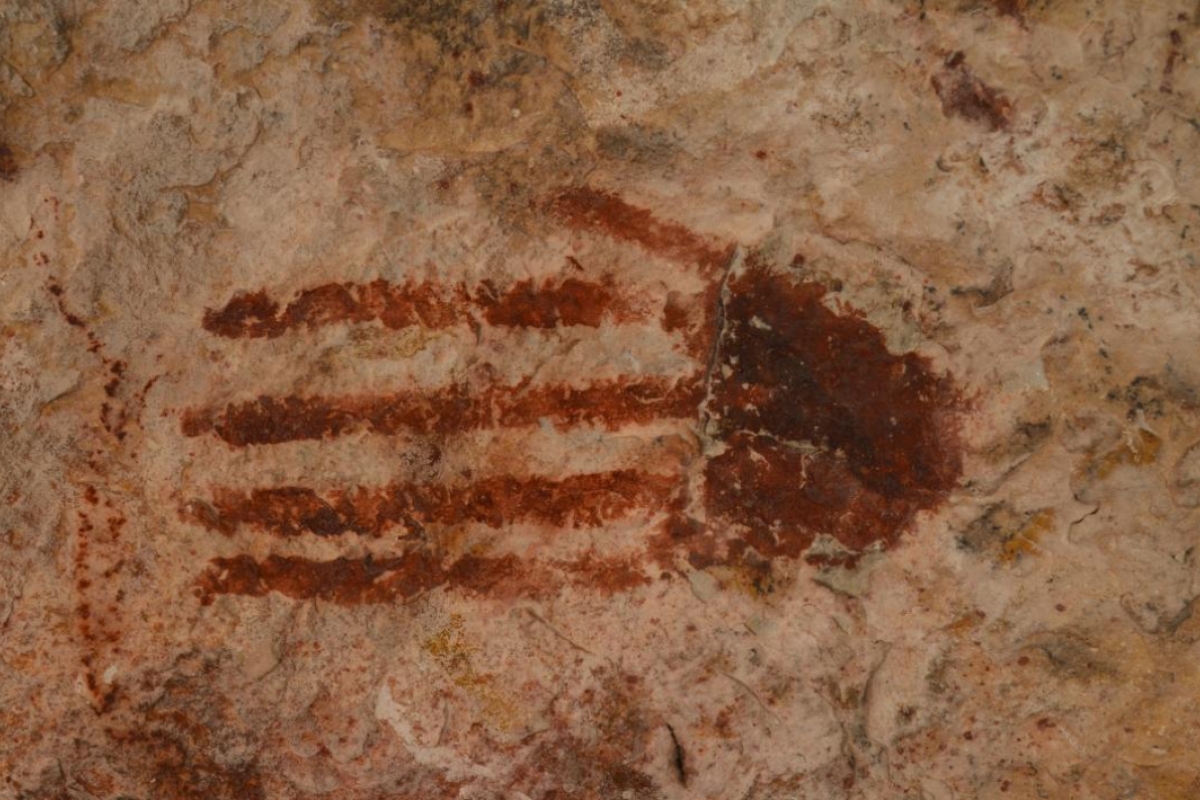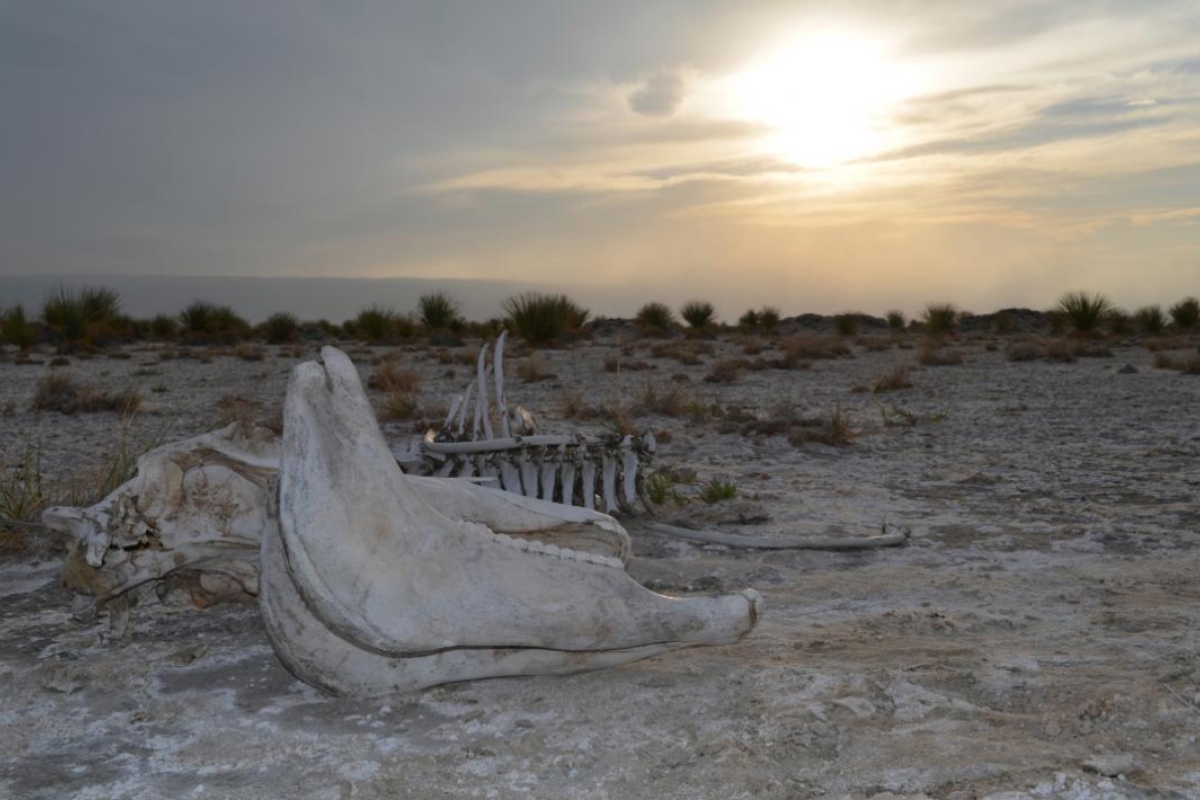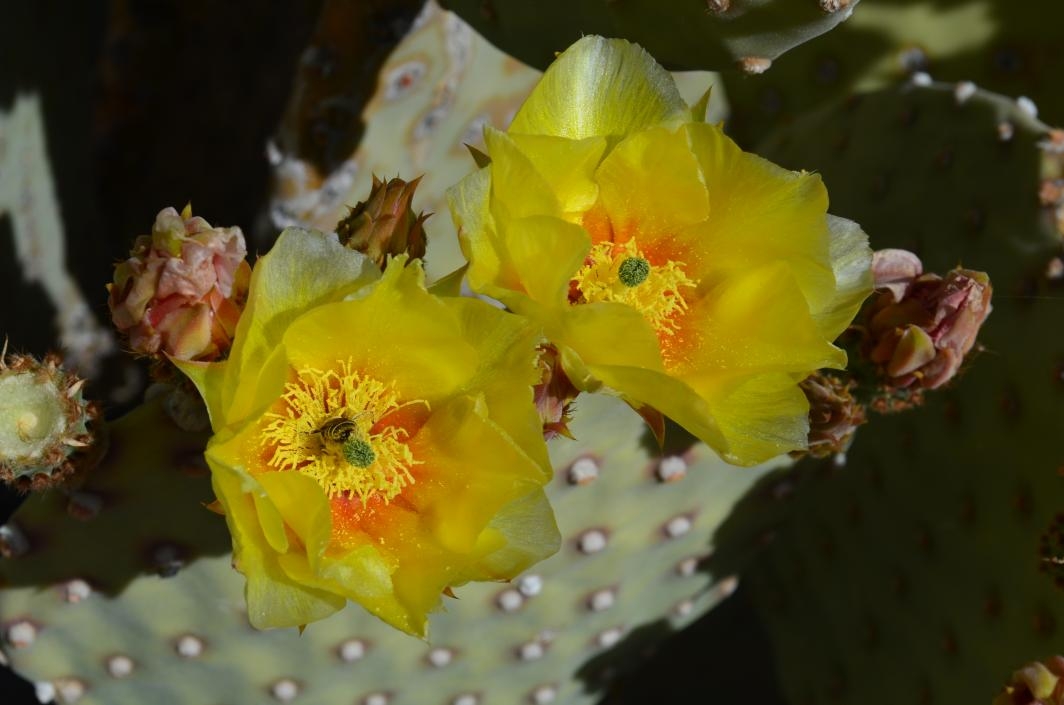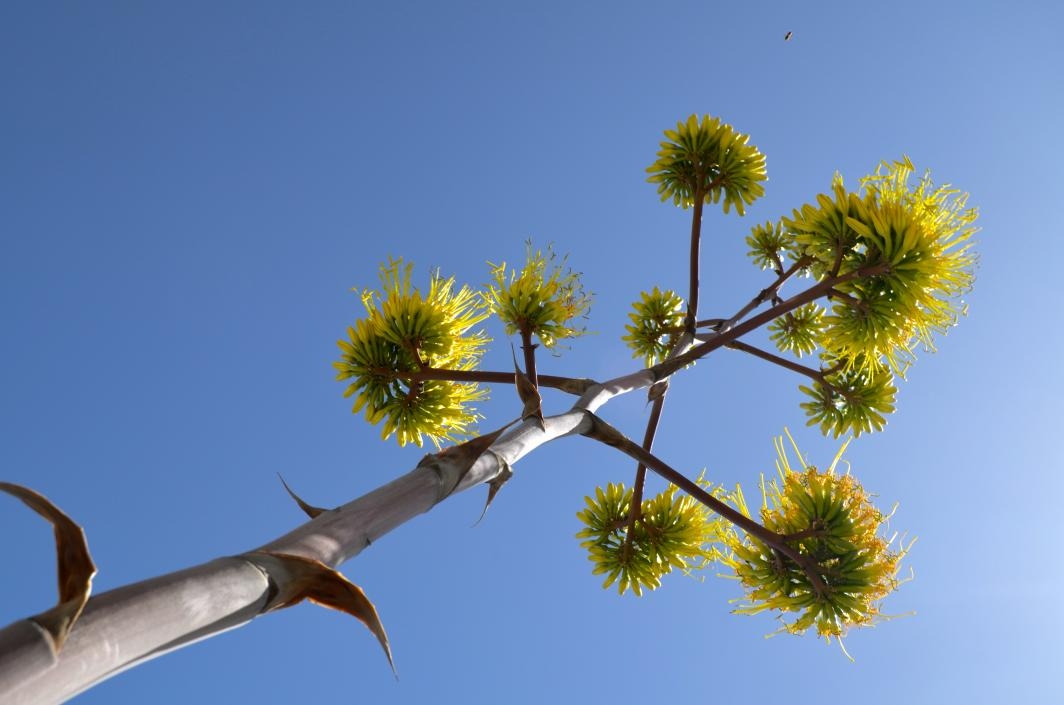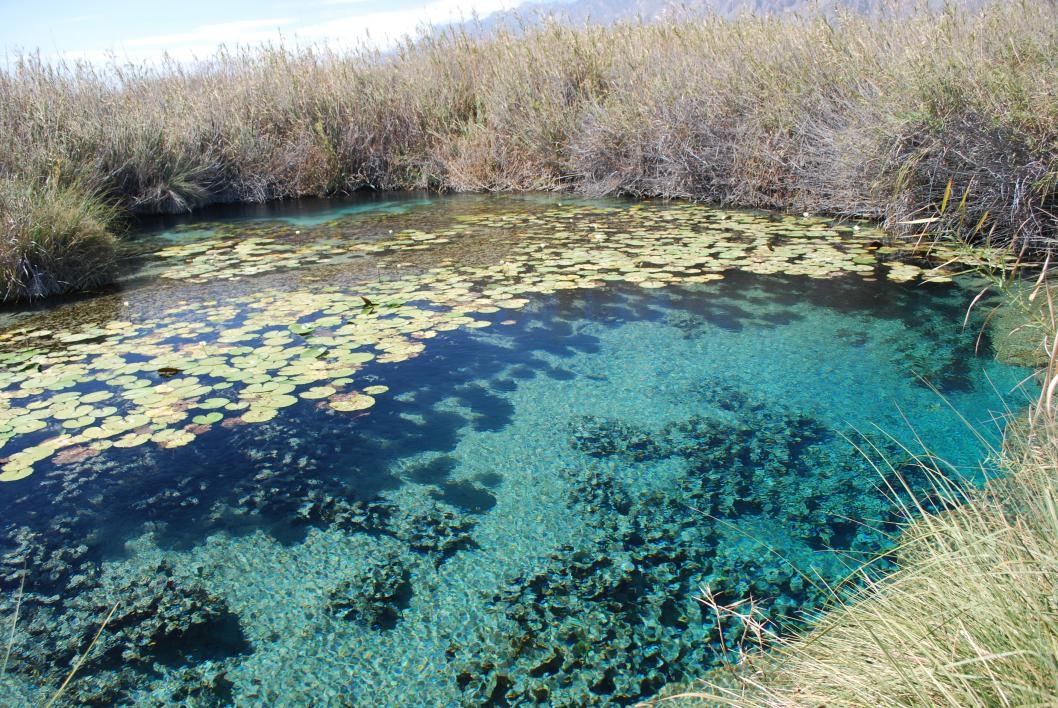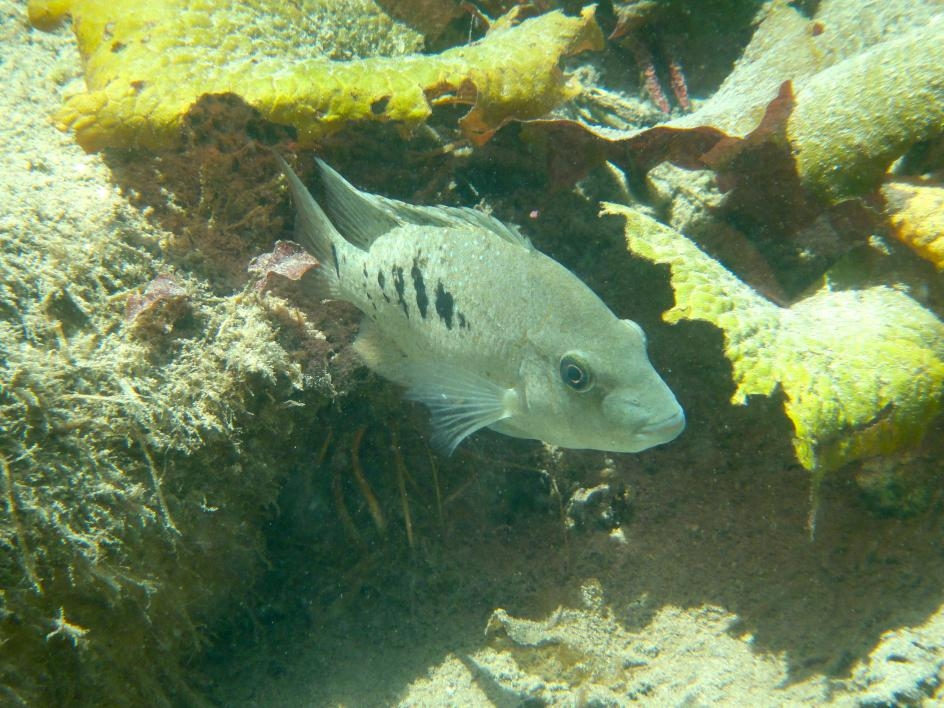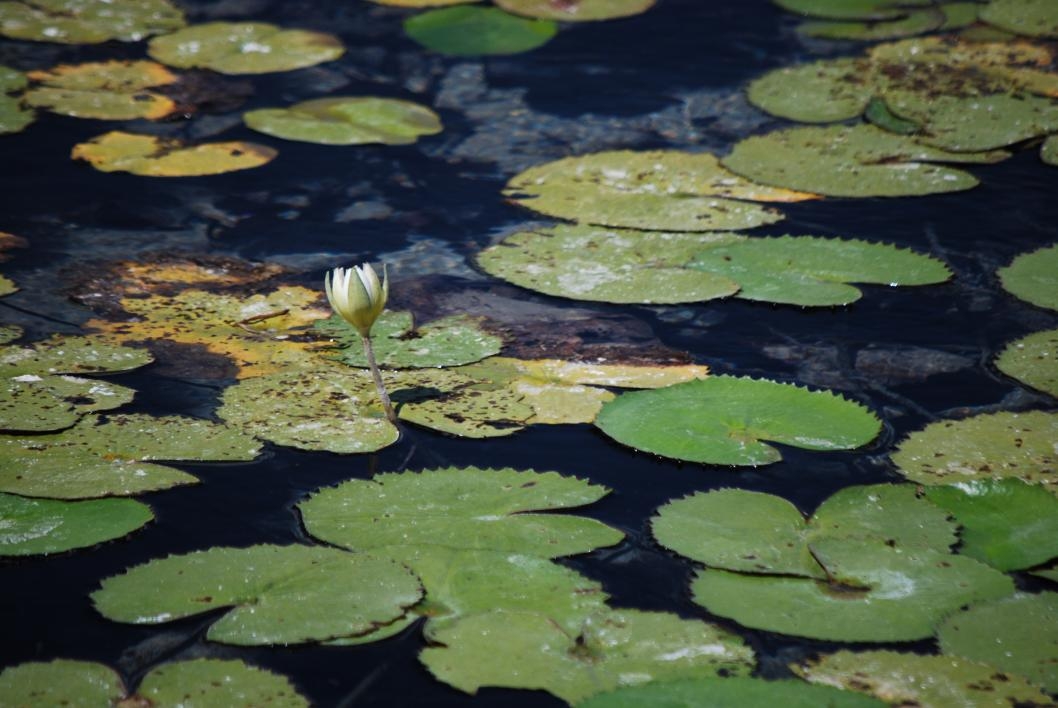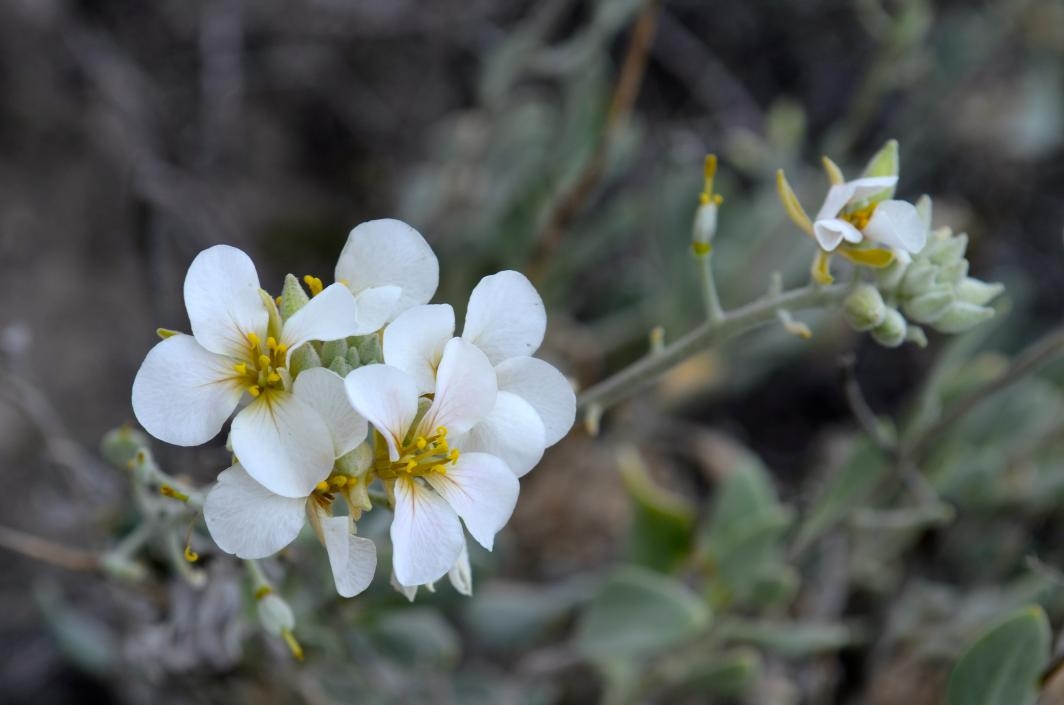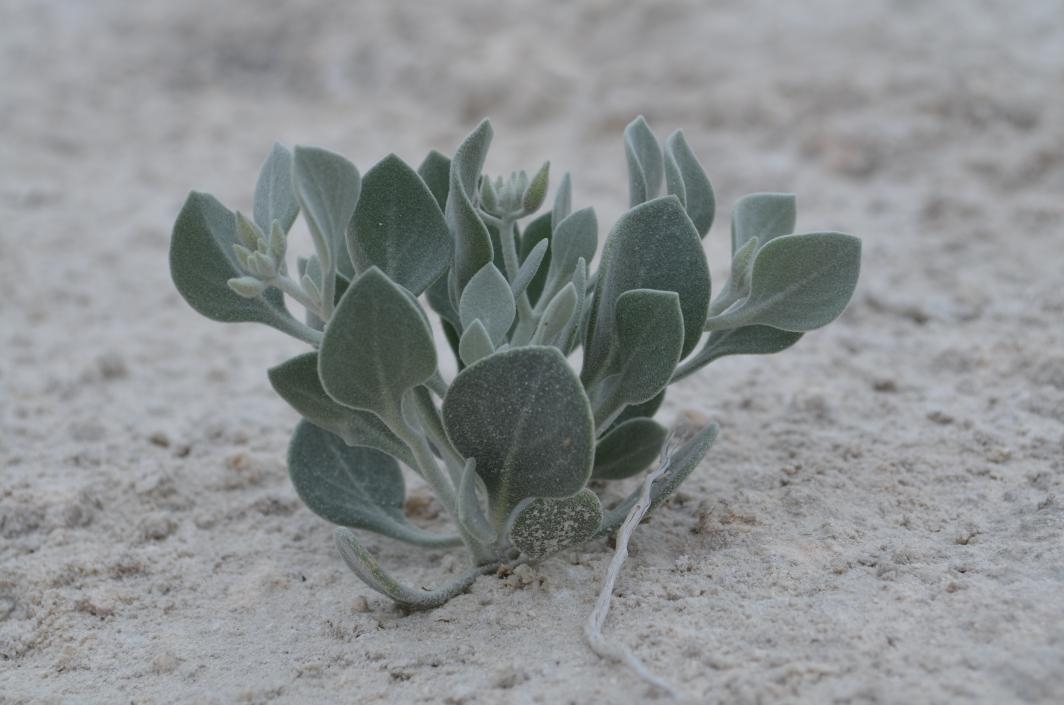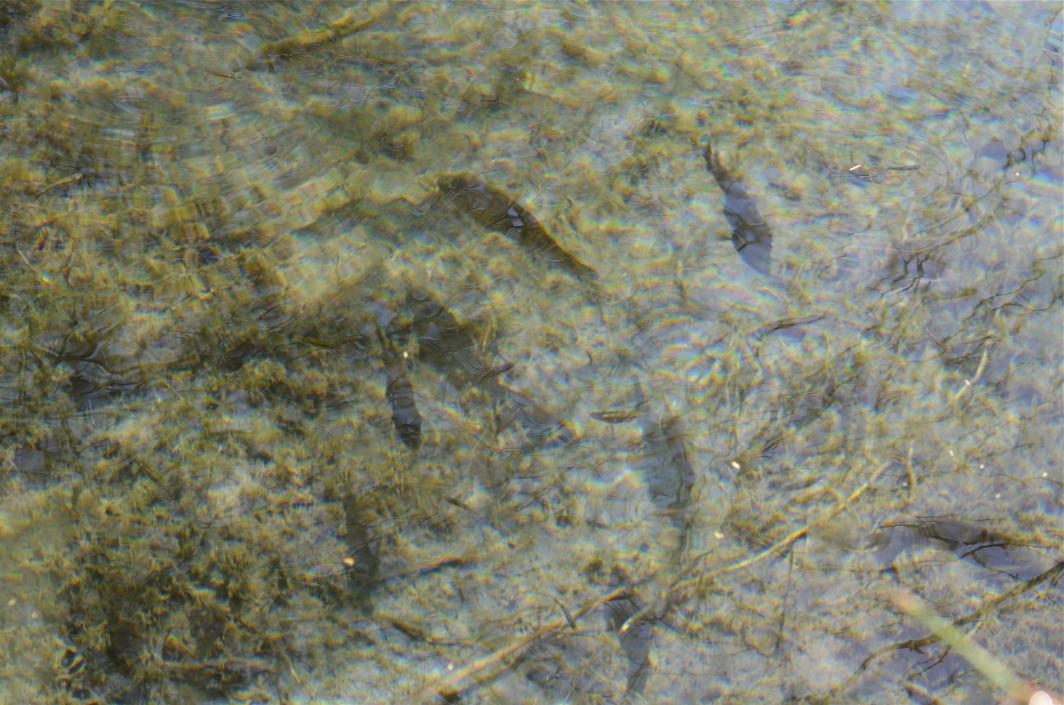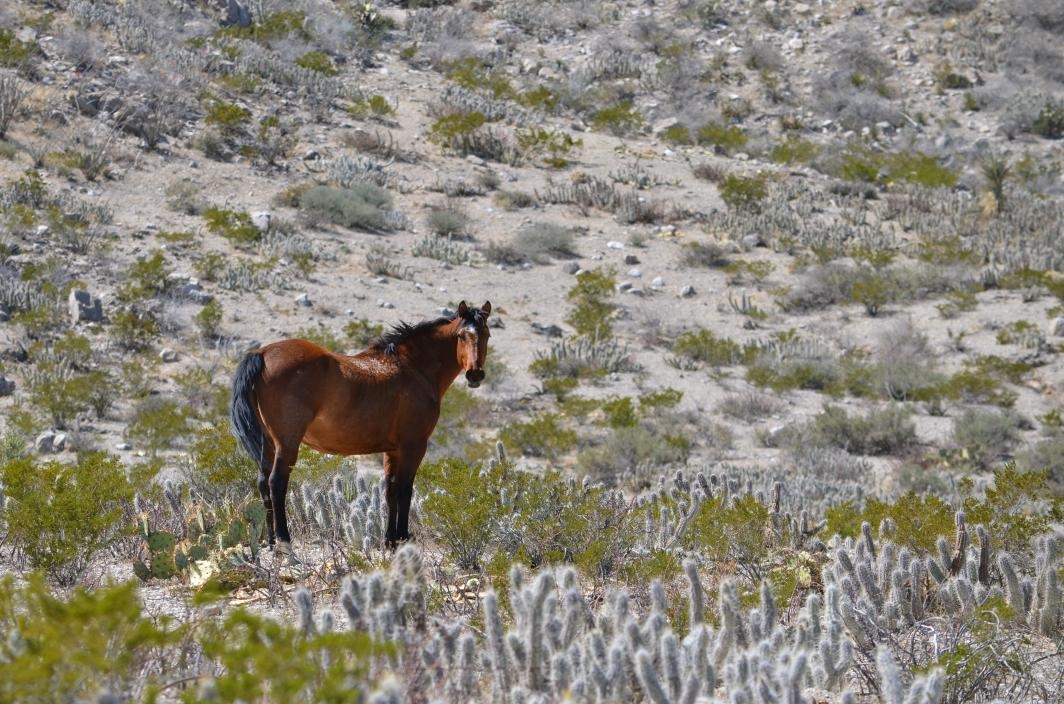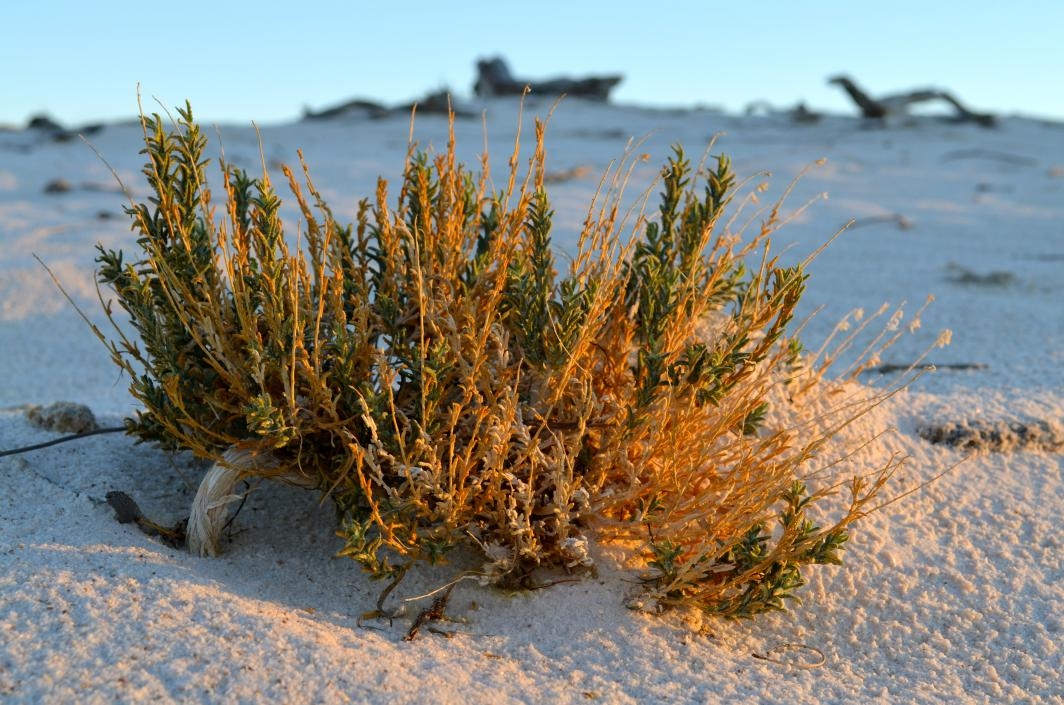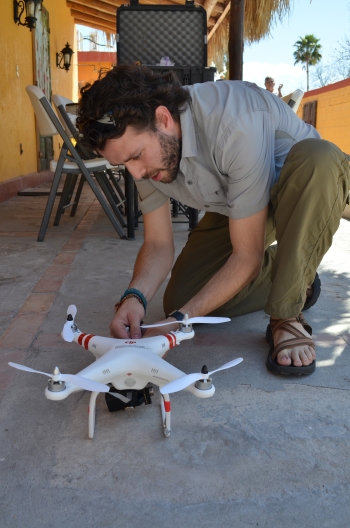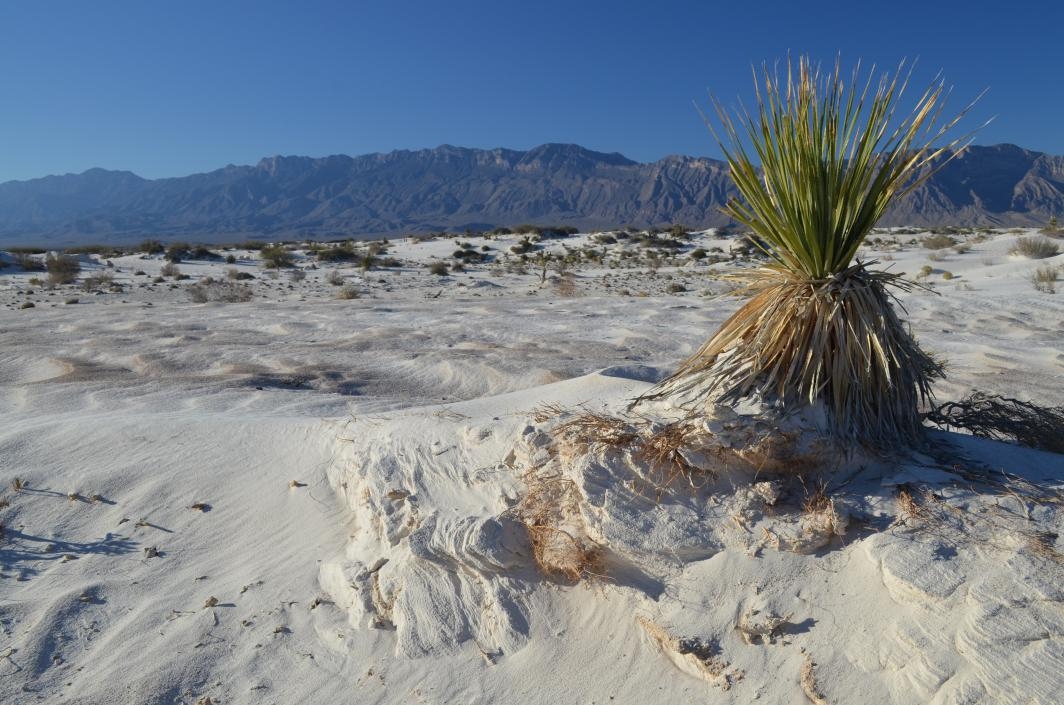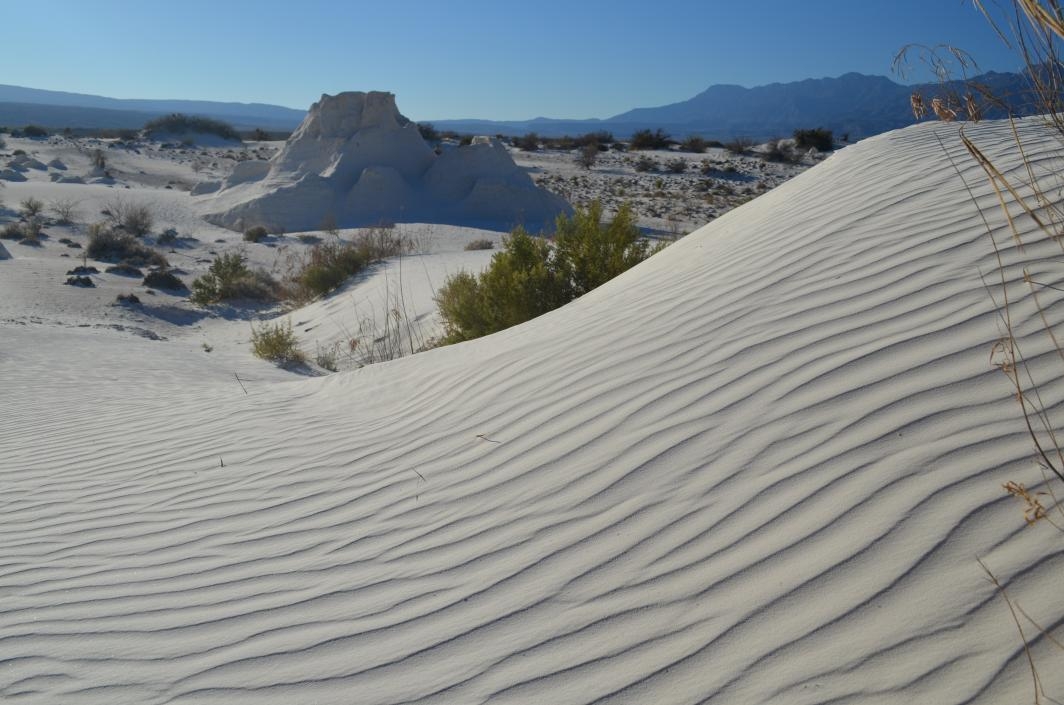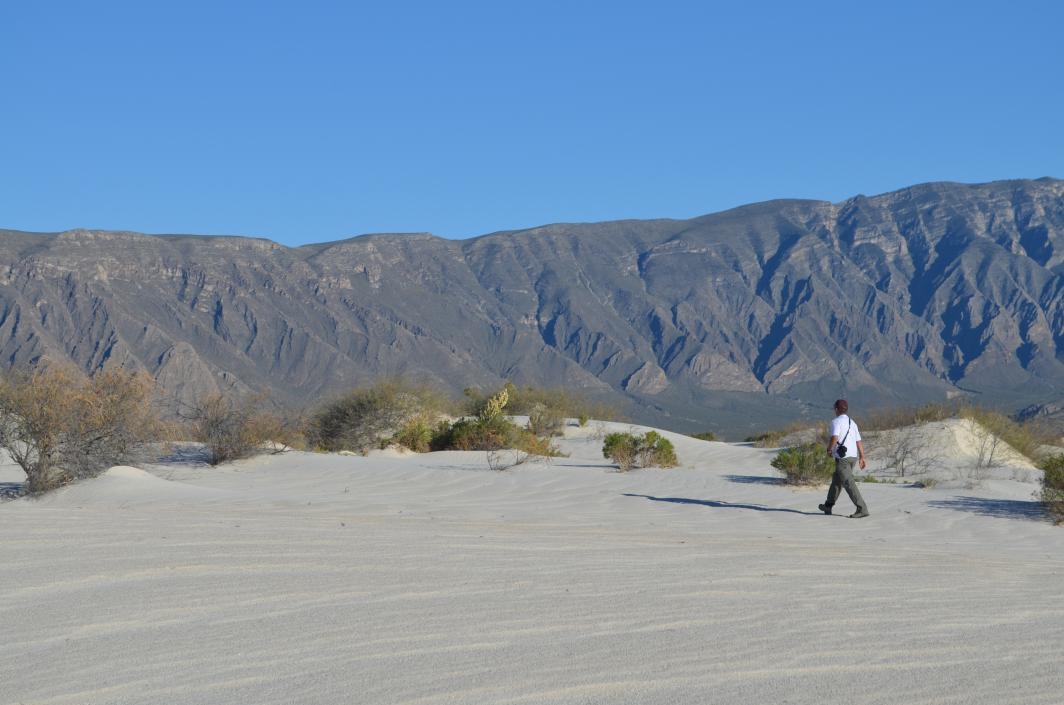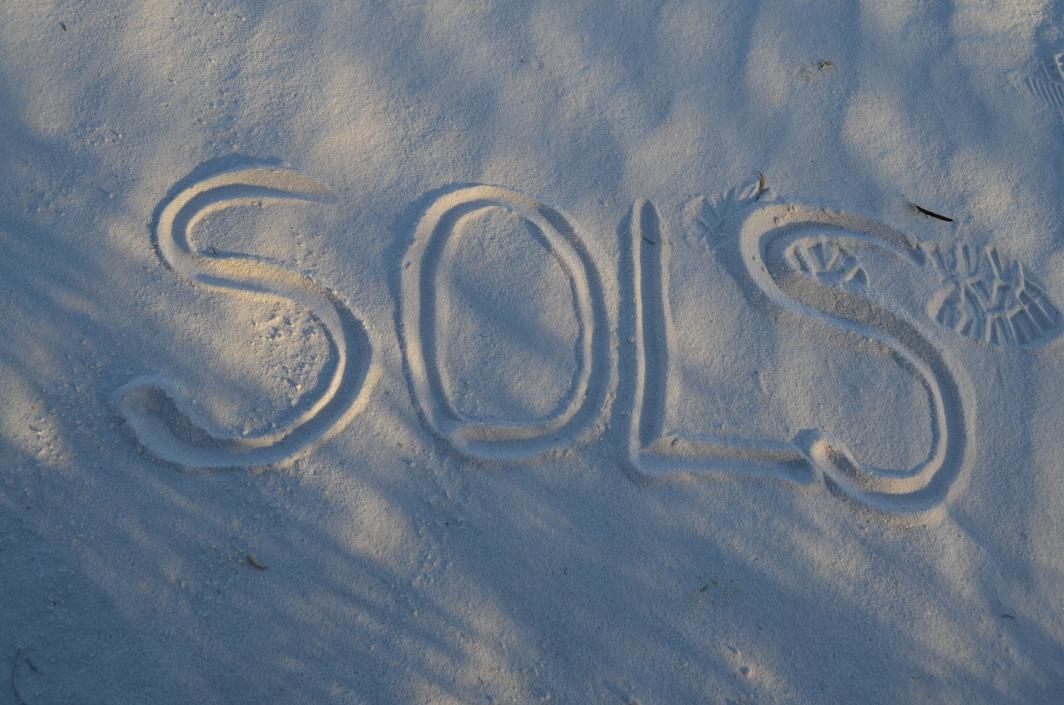Along an isolated stretch of road in northern Mexico, craggy limestone mountains suddenly appear, jutting up from the side of a two-lane road, towering dramatically over an endless expanse of a dry and seemingly deserted valley. At first glance, the gray, stubbled landscape seems inhospitable and empty of much life except for the occasional exclamation of a flowering ‘sotol’ — a relative of the yucca plant.
As with many deserts, looks can be deceiving. While it may seem barren, this portion of the Chihuahuan desert in the state of Coahuila, Mexico, will not only take you by surprise, its hidden treasures will charm and captivate you — finding their way into your heart like a teenager’s first crush.
Delighted. Transfixed. Enthralled.
These are common reactions seen on the faces of the scientists and visitors who are drawn to this fascinating place time and time again. Teeming with unique life forms, Cuatro Ciénegas conceals its mysteries just behind the flaxen reeds, beyond the white gypsum dunes and below the hardened surface of the desert floor.
Turquoise-, amber- and crimson-colored pools fed by spring water dot the basin like brilliant jewels on a royal crown, while the Sierra San Marcos mountains stand guard. Hundreds of these pools, or ‘pozas’ in Spanish, are home to one of the most biodiverse environments on the planet. Dozens of fish species, snails and plants found in the Cuatro Ciénegas basin are endemic to this area — existing nowhere else on Earth.
James Elser, a limnologist and professor with Arizona State University’s School of Life Sciences, has been investigating the site since the mid-1990s and is one of a long line of ASU researchers to make the trek southward.
“Mostly, we’re studying how — in aquatic systems in this amazing place — how chemical elements shape the ecology and evolution of life here,” said Elser. “We started by researching systems like this with small stromatolites, studying the life forms that were present for billions of years on early Earth. We try to understand their ecology, how nutrients like phosphorus and nitrogen affect them, and then how food webs operate with them.
“Also, by using metagenomics techniques, we’re looking at how phosphorus and other chemical elements shape the ecology and the evolution of the bacteria,” he added.
Believed to be the remnants of an ancient sea, Cuatro Ciénegas is an important place to study, said Elser. “We think of it like a desert Galapagos. It’s this place with so many unique species. The vegetation and animals here in the valley have the highest level of endemic biodiversity in North America. We’ve known this for a while,” he added, “but we are also seeing incredible microbial diversity just from place to place, pond to pond. It’s like every pond is a little experiment in evolution.”
Minckley’s cave: A research legacy begins
It all started with an ASU professor by the name of W. L. Minckley. He was, according to his peers, the best ichthyologist in the state of Arizona — ever. As a desert fish ecologist, Minckley spent his career studying fish species throughout the Southwest, including at the Cuatro Ciénegas basin.
A chance meeting with a colleague set the wheels in motion for Minckley to travel to the Chihuahuan desert and become the first of at least several generations of ASU researchers and students to study the area.
“This professor from the University of Kentucky who went to Mexico on a collecting trip, probably sometime in the ‘50s, came back with a box turtle that lives in the water,” said Elser. “And Minckley said, ‘No way. Box turtles don’t live in the water!’ He couldn’t believe it. He went to Mexico to verify this, and lo and behold! He found the endemic Cuatro Ciénegas box turtle, which is the world’s only box turtle that lives in the water.”
Minckley was hooked.
For several decades, he shared his fascination with Cuatro Ciénegas by bringing dozens of faculty and undergraduate and graduate students to Mexico, in hopes they would begin their own studies there. The groups would camp at the so- called “Minckley’s Cave” for days, collecting samples and studying the plant, invertebrate and fish species. Many of his students did begin their own research, some of which is ongoing.
After countless trips south, Minckley became well-known by the locals, and his research and that of other American and Mexican scientists showed the community and the Mexican government the importance of the basin and its biodiversity.
Their research became a catalyst for the Mexican government in 1994 to designate the habitat as a Natural Protected Area.
Before his passing in 2001, Minckley wrote some 175 research articles and penned three books. In recognition of his discoveries as a conservation biologist, five species, including a snail, a scorpion, a beetle, a fly and a cichlid fish, are assigned the name “minckleyi.” Several of these are from Cuatro Ciénegas. An aquarium in town and a small zoo are also named for him.
Near Poza Azul, one of the larger, deeply colored turquoise pools, stands a memorial honoring professor Minckley. His ashes were scattered nearby.
Cross-border collaborations
During Minckley’s 38 years of teaching at ASU, he forged critical international connections and collaborations — partnerships that continue even today.
Working abroad often comes with unique challenges — some of which cannot be easily overcome without support from local collaborators. In the case of Cuatro Ciénegas, Valeria Souza, a skilled microbiologist with Universidad Nacional Autónoma de Mexico, assists with obtaining sampling permits and access to several research sites, and also provides new research perspectives.
“It’s really important to have Mexican collaborators because this is their place,” said Elser. “They should be responsible for understanding and investigating Cuatro Ciénegas. And they are smart. They have great techniques and expertise. Valeria Souza, especially, is a force of nature. She creates a whirlwind of activity around her and makes a lot of things possible here.
“We have been doing research here since the early days with Minckley. But when Valeria joined our research efforts, that’s when we started to describe the microbial diversity,” stated Elser.
After meeting Elser, Souza (pictured right) said she learned how to work together as an international team. And through this effort with Elser, Souza said she became empowered to know that as scientists, their research could provide the voice for a critical conservation issue.
“Actually, I owe it to Jim to be here. Because of him, I discovered myself through this kind of Galapagos. Before, I never imagined doing what I’m doing now,” said Souza. “I think this is not only a social experiment on the point of view of the community, it’s a social experiment on the point of view of how to do science in a horizontal way where everybody is important.”
Elser said Souza’s students come to work at his lab, and his students visit Mexico City to work at her lab. After a dozen years of collaborating, the pair has written many scientific papers together.
While Minckley paved the way for effective faculty collaborations, he also laid the foundation for students to develop additional connections with landowners, non-profit organizations and government officials who provide access to new study sites.
A threatened ecosystem
While the area is designated as a protected habitat, there is little government oversight or specific rules as to how the land should be conserved. Local farmers continue to pump the ground water and divert surface streams to irrigate thirsty crops such as alfalfa and melon, and to support horse and goat ranching. Some ponds have dried up or diminished, leaving the plants and animals — not to mention the diverse microbial ecosystems — threatened, dead or dying.
Now closed, a gypsum mine operated in the valley for 27 years, changing the landscape and altering critical habitat. The scientists say without further protection and community support, the endemic life that depends on a healthy ecosystem is in grave danger of disappearing forever.
Art as a conservation strategy
On this trip, professor Elser and a crew of undergraduate and graduate students work in a different fashion as they trade their researcher hats for those of filmmakers. They are creating a short, artistic documentary to highlight what’s happening in the valley in terms of the history of the planet and the area’s evolutionary history.
“Ancient peoples arrived 10,000 years ago. We see their cave paintings and signs of life,” said Elser. “But just 100 years ago, modernity hits and has especially accelerated in the last 50 years.
“It’s that collision I’m interested in — how people cope with it or don’t, and what it means for the future. The decisions we make now, the decisions the people of this town make, and the decisions the people in Mexico City make about this location, determine the future of life here that took billions of years of evolutionary history to produce,” he added.
Created as part of a National Science Foundation research grant, the film will be presented in both Spanish and English and shown to audiences in Mexico and the U.S. Written by Elser and titled “The Long Alchemy of Becoming,” it chronicles the history of the universe as told through the valley’s evolution. The hope is that local students will see the valley in a new light, as something to be protected and studied.
Samantha Davis, a student with the ASU Walter Cronkite School of Journalism, shot and edited the film.
“After I studied abroad, I really wanted my thesis to be something international, and I was very excited when this opportunity came up because this is exactly what I wanted to do,” said Davis, also a student with Barrett, The Honors College. “The Chihuahuan desert is so beautiful, it’s easy to get great shots. And, with this new technology, I can add time lapses to the movie and the drone shots will be fantastic,” she shared.
Jorge Ramos, a graduate student with ASU’s Environmental Life Sciences program, also joined the film team. Ramos, a fifth-year doctoral candidate and a wetland ecosystem ecologist, was in charge of piloting a quad-copter video camera over the rugged landscapes.
“I got to learn how to use new technology and fly a quad-copter (pictured left) to get images for the movie. But, I think this new kind of technology is actually going to be crucial to understanding landscapes like this during our research,” said Ramos. “Other than losing the electronic connection with the quad-copter a couple of times, the shoot went very well.”
Undergraduate journalism major Josh Burton also made the trek. “ASU has proven to me once again that there is plenty of adventure to be had, and not to take it for granted,” he said. “This has been a real challenge for me as a videographer and photographer, but I’ve also come to see a new culture. I’ve spoken Spanish and gotten to interact with a huge range of people.”
The next generation
As Elser and Souza wrap up their latest research project and begin to process a huge amount of data collected over several years, another element comes into focus.
“We’re doing everything we can to educate the kids from kindergarten to high school to change their view on the ecosystem,” said Souza. “I truly believe that we can have it all. We can have water conservation through new technology, and we can have the pools. We’re working on something called Biotech for Conservation where the genetic resources of the microbial communities can work for the people who live here in order to change the way they produce food.”
Elser has high hopes that these critical collaborations have set the stage for future successes.
“You’d think Minckley and his Mexican collaborators were the first generation, describing the species and establishing the protected areas here,” said Elser. “Valeria and I are the second generation, furthering the science and preparing the third generation — Valeria’s students, and students like Jorge at ASU. I really hope the fourth generation of scientists will be from Cuatro Ciénegas itself, discovering the science of the valley through the high school programs that Valeria has established and that we’ve been helping with.
“There are many things we don’t know that are yet to be discovered, that I hope the kids in Cuatro Ciénegas will discover someday, things that could make a difference in medicine or agriculture or other areas where we need more knowledge.”
Read more
Discover more about ASU's involvement in Cuatro Ciénegas here: ASU wetlands ecologist explores ancient sea in the desert.
The School of Life Sciences is a unit of ASU's College of Liberal Arts and Sciences. This story appears in the latest issue of SOLS Magazine.
More Science and technology

Cracking the code of online computer science clubs
Experts believe that involvement in college clubs and organizations increases student retention and helps learners build valuable social relationships. There are tons of such clubs on ASU's campuses…
Consortium for Science, Policy & Outcomes celebrates 25 years
For Arizona State University's Consortium for Science, Policy & Outcomes (CSPO), recognizing the past is just as important as designing the future. The consortium marked 25 years in Washington, D…

Hacking satellites to fix our oceans and shoot for the stars
By Preesha KumarFrom memory foam mattresses to the camera and GPS navigation on our phones, technology that was developed for space applications enhances our everyday lives on Earth. In fact, Chris…
